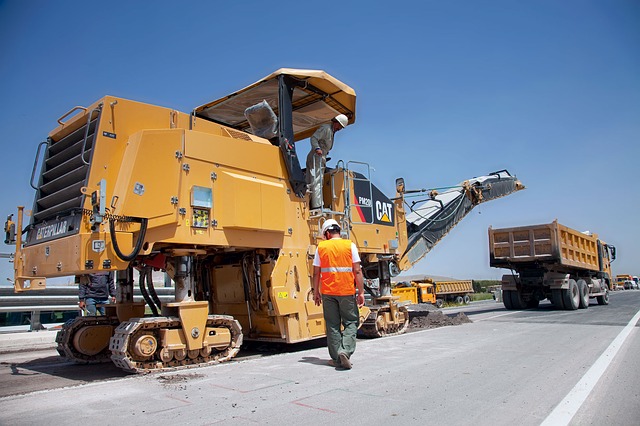The condition of roads determines the frequency of accidents and driving experience. We all prefer well-maintained, smooth roads as they help us reach our destination on time. Milling is one of the best and pocket-friendly ways to ensure the roads are always in their best shape. Let’s see what asphalt is and how it helps in the upkeep of roads.
What Is Asphalt Milling?
Over time, road heights get uneven, and road surface gets rougher because of constant asphalt overlay. Asphalt-milling is the process of digging up the top layer of the asphalt to a specified length with a cold-milling machine. This helps even out the road and makes it smoother so that it is fit for use.
Asphalt milling can come to the rescue when the road’s sub-base is intact, but the top layer needs attention. The milling process saves time as only the upper layer is repaired without ripping the entire asphalt pavement. On top of that, it keeps the drainage systems undisturbed.
 Milling is done using a heavy-duty milling machine, also called a cold planer. The manually operated machine is outfitted with a large rotating drum that removes and grinds the asphalt surface.
Milling is done using a heavy-duty milling machine, also called a cold planer. The manually operated machine is outfitted with a large rotating drum that removes and grinds the asphalt surface.
Once the damaged asphalt is removed to the desired depth, the area is swept clean. This allows the fresh asphalt to set perfectly and bond more effectively.
The milling machine is also equipped with a discharge conveyor, which is attached to its front. This conveyor collects and loads the recently scrapped, old asphalt to a truck. This asphalt is recycled later for various purposes.
Common Road Distresses Milling Repairs
This restores the original condition of asphalt pavement by tackling the following problems:
- Raveling: Raveling is one of the most commonly encountered pavement problems. It refers to the disintegration of an asphalt road. This happens when the aggregate material that the road is made up of starts breaking off. This loose debris on the road becomes problematic for vehicles passing by.
- Shoving: More often than not, roads become riddled with ripples. This is known as shoving or wash-boarding. Caused by constant braking or speeding up, the deflection of the road is parallel to the direction of the traffic. Shoving usually happens in areas where the traffic mostly starts and stops.
- Bleeding: Bleeding refers to the shiny, glass-like film formed on the surface of a road. The film becomes slippery when wet and sticky when dry. This is dangerous for vehicles passing by as it can result in a loss of skid resistance when the road is wet.
- Rutting: Rutting is a longitudinal depression on the pavement due to the passage of traffic. The typical wheel path that we see engraved on roads is rutting. Rutting makes a road unsafe and leads to accidents. It is also unfavorable for the lifespan of the road.
Milling is a cost-effective way to deal with all these common pavement problems. It helps restore a road to what it was initially, without tampering with its sub-base.
Address
Commonwealth Paving, 136 Outerloop, Louisville, Kentucky 40214
Phone: 502-459-7283, Fax: 502-456-2678
Opening Hours
| Monday | 9:00 AM – 5:00 PM |
| Tuesday | 9:00 AM – 5:00 PM |
| Wednesday | 9:00 AM – 5:00 PM |
| Thursday | 9:00 AM – 5:00 PM |
| Friday | 9:00 AM – 5:00 PM |
| Saturday | Closed |
| Sunday | Closed |







